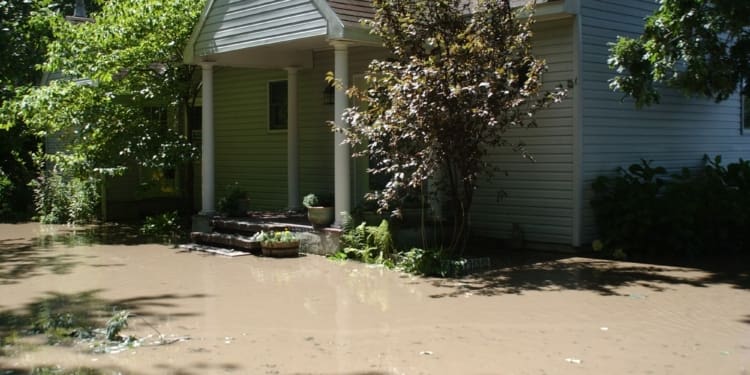The storm has subsided and most of the water has dried up from the floods, but the Town of Colonie has announced plans for cleanup and assessing what kind of damage was suffered during Tropical Storm Irene. As President Barack Obama announced that Albany County would be eligible for FEMA Disaster relief and Gov. Andrew Cuomo estimated damages would be around $1 billion in New York, The Town of Colonie is still in the beginning stages of estimating the costs of damages. “We’re in the preliminary stages of damage assessment right now,” said Mike Rayball, director of the Emergency Management and Planning Department. “What we have to do is come up with an estimate of what the costs were. Departments are compiling overtime hours and equipment used and are identifying damages that were caused by the storm. Then we will sit down with representatives from FEMA and fine tune those.” It will be a slow process, Rayball said, as the federal government will most likely move slow through the process since the scope of damage in the state and other areas is quite large. For businesses or individual assistance, Rayball said people will have to contact FEMA on their own, as the town does not get involved. People can contact FEMA and make claims to possibly receive low cost loans or grants for uninsured losses by calling 1-800-621-3362 or visiting www.disasterassistance.gov. The town is offering a service for residents to help pick up oversized debris created by Tropic Storm Irene beginning Sept. 12. Residents are also allowed to bring storm debris to the town’s landfill at no cost until Sept. 17. “We’re in the preliminary stages of damage assessment right now,” said Mike Rayball, director of the Emergency Management and Planning Department. “What we have to do is come up with an estimate of what the costs were. Departments are compiling overtime hours and equipment used and are identifying damages that were caused by the storm. Then we will sit down with representatives from FEMA and fine tune those.” The schedule will follow the same rotation as the regular curbside yard waste collection. Residents are asked to not place brush in the road, over a storm sewer or around an underground utility brush. The town is also asking residents to not put the brush out in the streets until after they have been cleaned. According to Department of Public Works Commissioner Jack Cunningham, the clean-up process is expected to take three weeks to complete. He said the roads themselves did not suffer a significant amount of damage and that all of the flood water drained pretty quickly. “We have downed trees, downed branches and power outages but compared to other municipalities we fared pretty well,” he said, adding that the amount FEMA funding will be given based on the amount of damage that has been assessed. “My guess is that all municipalities will reach that plateau.” The town’s sewer plant and its water plant came out of the storm unscathed, Cunningham said. There was some concern with the leachate from the landfill but it was quickly resolved before the storm. The pump system is set up a long the Mohawk and discharges the leachate into the sanitary system. The station flooded, Cunningham said, so they had to shut it down and couldn’t pump up to the sewer system. “So we pumped up all of the leachate out of the system before the storm and once the storm started we took it offline,” he said. “We didn’t have any spillage or create an environmental hazard. It was managed very well and we prepared very well.” Rayball said the residents of Colonie also did a good job in heeding the warnings from the town by either evacuating or staying off the roads during the storm. He understands there were criticisms of both the media and local governments for overhyping the storm, but he said there was a reason for the requests made by the town. “People get the attitude these things get overhyped,” he said. “Consequently, you saw people surfing in the waves and riding wave runners in the floods. When we ask people to do something, it’s for a reason so we can reach people who really are in need and to prevent further blockage so we can get where we need to get… For those people capable of taking care of themselves, look to a neighbor and help them, or someone elderly or infirmed so resources can be used for people truly in need.”
Recovering from Irene
Leave Comment



